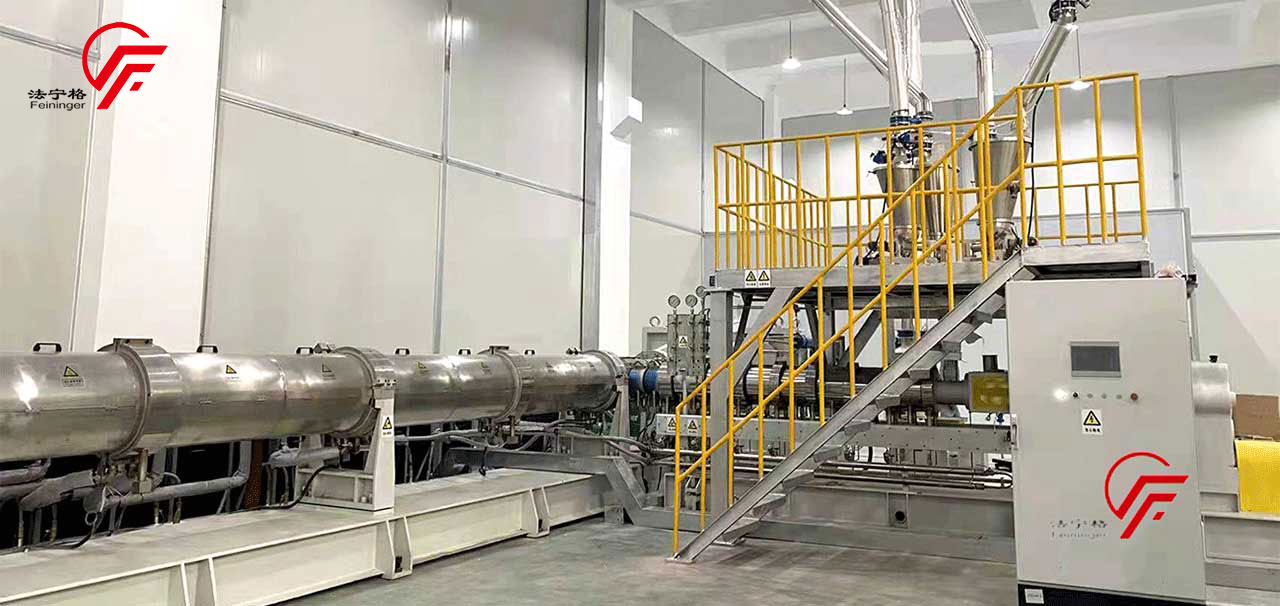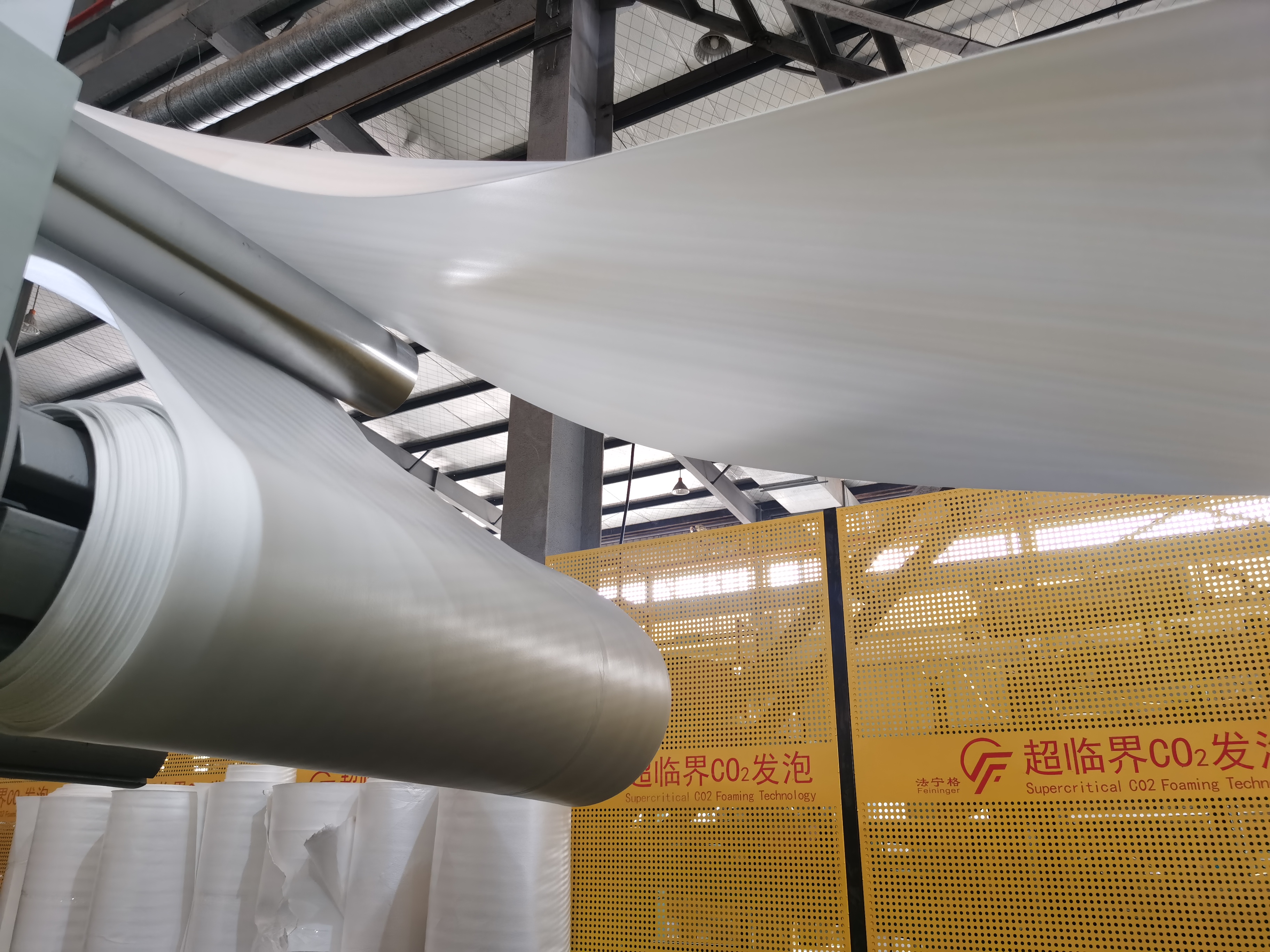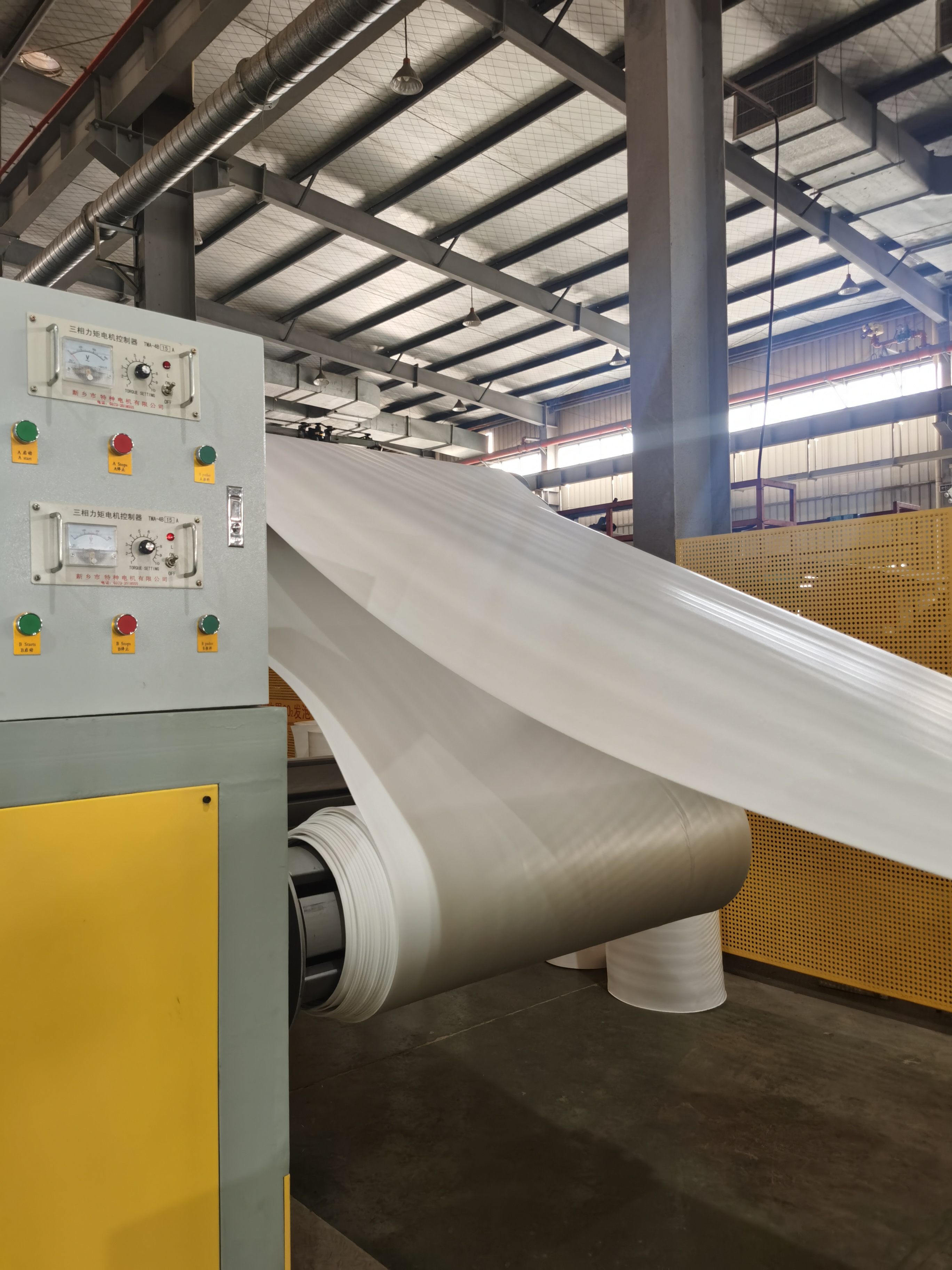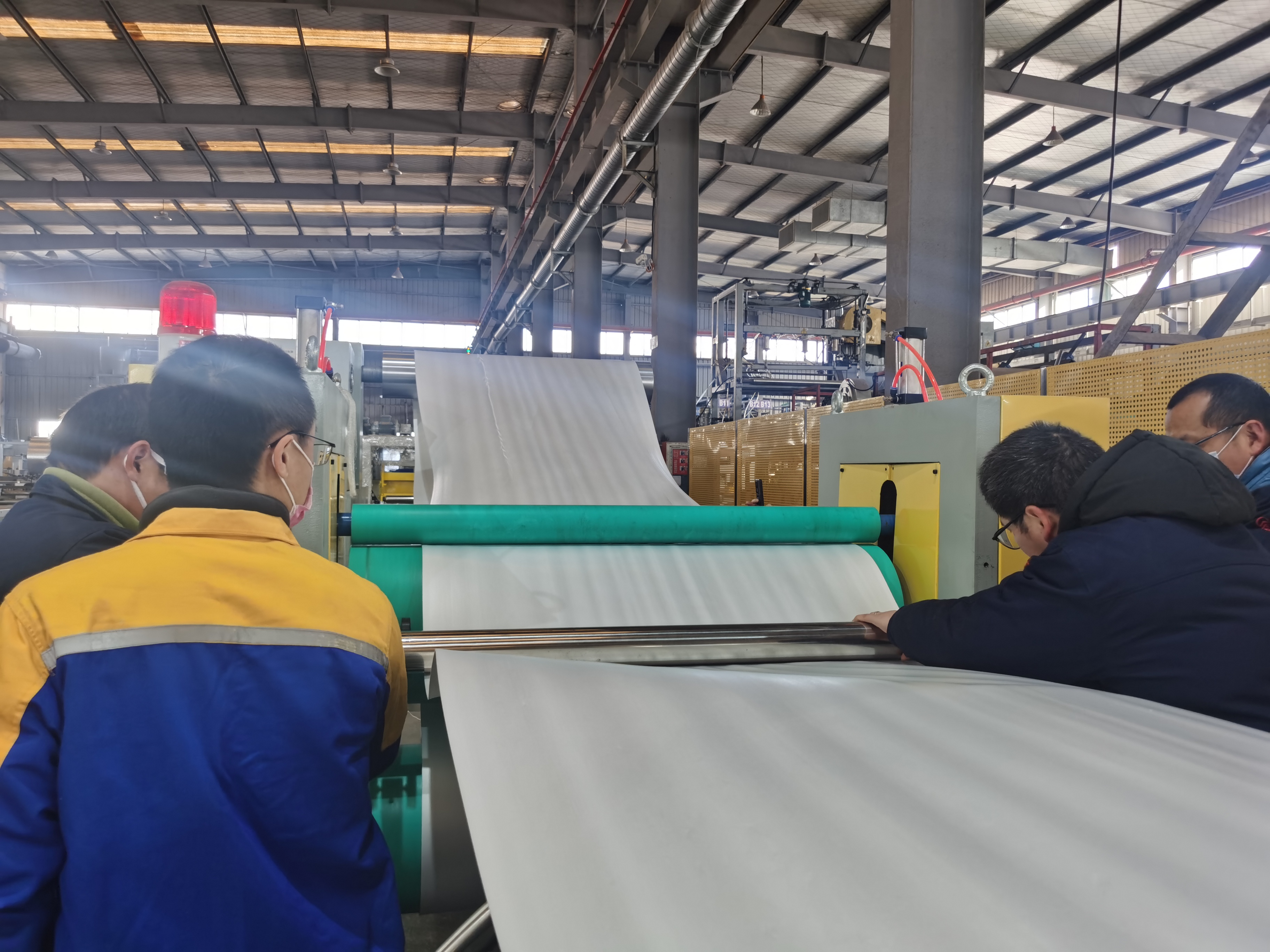In today’s rapidly evolving industrial landscape, innovation in materials technology is a critical driver for sustainable growth and improved performance across diverse sectors. One such breakthrough material is PET foam core, a lightweight, high-performance core material that is revolutionizing industries from building insulation to wind energy. Produced through advanced PET Foam Core technology. In this article, we explore the multi-field advantages of PET foam core, delve into its unique properties and manufacturing process, and illustrate how Feiginger’s state-of-the-art PET extrusion machines are leading the way toward environmentally friendly and cost-effective solutions.
Introduction
PET foam core is produced from polyethylene terephthalate (PET), a thermoplastic polymer renowned for its excellent mechanical properties, chemical stability, and recyclability. Traditionally used in the production of beverage bottles and fibers, PET has evolved into a highly versatile material when processed using advanced foaming techniques. By transforming PET into a foam core material, manufacturers can achieve an optimal balance of strength, thermal insulation, and weight reduction—qualities that are increasingly in demand in both construction and renewable energy sectors.

Feiginger, a pioneering company in the field of foam core production, has harnessed cutting-edge PET Foam technology to develop production lines that not only ensure high-quality output but also offer significant energy savings and environmental benefits. With growing market pressures for sustainable materials and cost efficiency, PET foam core emerges as a compelling alternative to traditional core materials such as PVC foam, which often face issues related to recyclability and performance under high-temperature conditions.

The Technology Behind PET Foam Core
Advanced PET Extrusion Machines
At the heart of PET foam core production lies the PET extrusion machine—a sophisticated system designed to process PET resin into a high-quality, foamed core material. Feiginger’s PET extrusion lines are modular and highly customizable, enabling manufacturers to adjust machine configurations to meet specific product requirements. The process involves melting bottle-grade PET chips and integrating additives such as chain extenders and nucleating agents, which help control the foaming process and ensure uniform cell structure in the final product.
One of the standout features of Feiginger’s production technology is the use of a composite foaming agent based on CO₂ instead of conventional fluorine-based agents. This innovation not only reduces production costs but also eliminates the environmental and health concerns associated with fluorinated blowing agents, achieving a zero-emission process that aligns with global sustainability trends.
Manufacturing Process and Quality Control
The PET foam core production process begins with the melting of PET resin in a twin-screw extruder, which ensures a thorough mixing of additives and uniform temperature control. As the material is extruded, the foaming agent is injected to initiate the formation of a cellular structure. The material then passes through a series of cooling racks and optional online planing systems, where precision cutting and surface treatment are performed to produce PET foam boards of the desired thickness and width.
This highly controlled process results in a PET foam core that boasts excellent mechanical strength, thermal insulation properties, and dimensional stability. The quality control measures implemented throughout the production process ensure that every batch of PET foam core meets stringent performance standards, making it suitable for high-end applications in both building insulation and wind energy.
Applications in Building Insulation
Thermal Insulation and Energy Efficiency
In the construction industry, building insulation plays a pivotal role in enhancing energy efficiency and reducing heating and cooling costs. PET foam core is emerging as a superior alternative to traditional insulation materials due to its lightweight nature and excellent thermal resistance. When used in sandwich panels for walls and roofs, PET foam core provides a high R-value, which is a measure of thermal resistance, thereby significantly reducing heat transfer through building envelopes.
Structural Integrity and Durability
Beyond its thermal properties, PET foam core offers remarkable mechanical strength and rigidity. Its closed-cell structure helps maintain dimensional stability over time, even under varying temperature conditions. This is especially beneficial for load-bearing applications in commercial and residential buildings, where long-term durability and resistance to deformation are critical factors. Additionally, the chemical inertness of PET ensures that the insulation panels remain unaffected by moisture or chemical exposure, further extending their service life.
Environmental Sustainability
The eco-friendly attributes of PET foam core make it an ideal choice for green building projects. Unlike PVC foam, which can release harmful substances over time and poses recycling challenges, PET foam core is 100% recyclable. Feiginger’s production process, which utilizes CO₂ as a foaming agent, contributes to lower greenhouse gas emissions and aligns with modern environmental standards. By incorporating PET foam core in building insulation, architects and engineers can create structures that are not only energy efficient but also environmentally responsible.
Applications in Wind Energy
Lightweight Core for Wind Turbine Blades
In the wind energy sector, the performance and efficiency of wind turbine blades are heavily influenced by the materials used in their construction. Wind turbine blades require a core material that is both lightweight and strong to ensure optimal aerodynamic performance and structural integrity. PET foam core meets these demands by providing a low-density, high-strength core that reduces the overall weight of the blade while maintaining excellent mechanical properties.
A lighter wind turbine blade translates directly into lower inertia and reduced stresses on the turbine’s support structure, leading to enhanced energy capture and improved operational efficiency. Moreover, the high thermal stability of PET foam core is particularly advantageous in regions with extreme temperature fluctuations, ensuring consistent performance over the turbine’s operational lifespan.
Improved Fatigue Resistance and Longevity
Wind turbine blades are subjected to continuous cyclic loading due to wind fluctuations, which can lead to material fatigue over time. PET foam core’s excellent fatigue resistance is a critical advantage in this application. The material’s uniform cellular structure minimizes stress concentrations, thereby extending the service life of the blade. Additionally, the ability of PET foam core to maintain its properties under prolonged exposure to high temperatures and varying environmental conditions further enhances its suitability for wind energy applications.
Environmental and Economic Benefits
The use of PET foam core in wind turbine blades not only improves performance but also offers significant environmental and economic benefits. With the growing emphasis on renewable energy sources and carbon reduction targets, the recyclability of PET foam core becomes a major selling point. Turbine blades made from PET foam core can be more easily recycled at the end of their life cycle, reducing waste and contributing to a circular economy.
Furthermore, by replacing traditional core materials such as PVC foam, which may suffer from higher production costs and environmental drawbacks, PET foam core offers a cost-effective alternative that supports the overall reduction of manufacturing expenses. Feiginger’s advanced PET extrusion machines ensure that production is efficient and scalable, making it easier for wind energy companies to adopt this technology on a large scale.
Feiginger: Pioneering Excellence in PET Foam Core Production
Feiginger’s commitment to innovation and quality is at the core of its PET foam core production line. The company leverages advanced PET extrusion technology to produce core materials that consistently exceed performance expectations in both building insulation and wind energy applications. Key aspects of Feiginger’s approach include:
Customization and Flexibility: Feiginger’s modular production lines can be tailored to meet specific customer requirements, whether that involves adjusting output levels, customizing sheet dimensions, or optimizing density levels for particular applications.
Energy Efficiency: With a focus on reducing energy consumption and lowering operational costs, Feiginger’s production lines incorporate state-of-the-art components such as hydraulic screen exchangers, static mixers, and advanced cooling systems.
Environmental Responsibility: By replacing traditional fluorinated blowing agents with CO₂-based alternatives, Feiginger significantly reduces the environmental footprint of its production process. This not only benefits the planet but also ensures that the final PET foam core product is safe, sustainable, and compliant with global environmental standards.
Robust After-Sales Support: Feiginger offers comprehensive training, technical guidance, and ongoing support to its customers. This commitment to service helps ensure that clients maximize the benefits of their PET foam core production lines and achieve long-term operational success.
PET Foam Sheet Production Line
A PET Foam Sheet Production Line is a specialized manufacturing system designed to produce polyethylene terephthalate (PET) foam sheets. These sheets are characterized by their closed-cell structure, which imparts properties such as lightweight, high strength, and excellent thermal insulation. The production process involves the extrusion of PET resin, often sourced from recycled PET bottles, combined with a foaming agent to create the desired foam structure. Advanced extrusion technology, such as Feiginger's PET extrusion machines, ensures high performance, low energy consumption, and durability. These production lines are versatile, capable of producing sheets in various thicknesses and densities to meet the specific requirements of industries like construction, transportation, and marine applications. The use of eco-friendly foaming agents, such as CO₂, further enhances the environmental benefits of PET foam sheet production.

Feininger offers advanced PET Foam Sheet Production Lines that combine high torque gear transmission with low power consumption. Their specialized screw structures ensure effective mixing of raw materials without dead angles, resulting in high-quality PET foam sheets. These production lines are designed for versatility and durability, making them suitable for various applications in the plastics industry.


Conclusion
From building insulation to wind energy applications, PET foam core offers a unique combination of lightweight strength, excellent thermal insulation, and environmental sustainability. Feiginger’s advanced PET extrusion machines and innovative production processes have enabled the creation of PET foam core products that are not only high-performing but also cost-effective and eco-friendly.
By leveraging the multi-field advantages of PET foam core, industries can reduce energy consumption, lower manufacturing costs, and contribute to a more sustainable future. Whether you are looking to enhance the energy efficiency of a building or improve the performance and longevity of wind turbine blades, PET foam core represents a forward-thinking solution that meets the demands of today’s dynamic markets.

 Español
Español Pусский
Pусский



